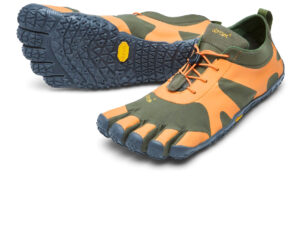In recent years, the global footwear industry has witnessed a remarkable shift in consumer preferences, with a growing demand for minimalist and natural footwear. This trend has given rise to the barefoot shoes industry, an innovative sector that emphasizes comfort, flexibility, and a closer connection to the ground. This article explores the exponential growth of the barefoot shoes industry, delving into the factors fueling its ascent and the impact it has on both consumers and the broader footwear market.
The Emergence of Barefoot Shoes:
Barefoot shoes, also known as minimalist shoes, are designed to mimic the experience of walking barefoot while providing protection and support. The concept behind these shoes is to allow the foot to move naturally, fostering better biomechanics and overall foot health. The origins of barefoot shoes can be traced back to the early 21st century when a handful of niche brands began challenging the conventional design principles of traditional footwear.
These shoes typically feature a thin sole, zero-drop (no height difference between heel and toe), and a wider toe box, allowing the toes to splay naturally. The minimalist design promotes a more natural gait, strengthens foot muscles, and encourages better posture. As awareness of the benefits of barefoot movement spread, so did the demand for shoes that embraced this philosophy.
Consumer Awareness and Health Trends:
The surge in interest in barefoot shoes is closely tied to the growing awareness of health and wellness among consumers. As people become more conscious of the impact of footwear on foot health, joint alignment, and posture, they seek alternatives that prioritize comfort and natural movement.
Barefoot shoes appeal to a diverse demographic, including athletes, outdoor enthusiasts, and individuals with specific foot conditions. Runners, in particular, have embraced the barefoot movement, as minimalist shoes promote a forefoot or midfoot strike, reducing the impact on joints and potentially lowering the risk of injuries associated with heel striking.
Additionally, the minimalist design aligns with the broader trend of sustainable and eco-friendly products. Many barefoot shoe brands prioritize using environmentally friendly materials, reducing their carbon footprint, and embracing ethical manufacturing practices. As consumers increasingly prioritize sustainability, the barefoot shoes industry has positioned itself as a responsible and mindful choice in the realm of footwear.
Innovations in Barefoot Shoe Technology:
Advancements in materials and technology have played a pivotal role in the growth of the barefoot shoes industry. Traditional athletic shoes often incorporate heavy cushioning and elevated heels, designed to absorb shock. In contrast, barefoot shoes rely on lightweight and flexible materials that allow the foot to move naturally.
Brands in this industry are continually innovating, experimenting with new materials like recycled plastics, natural fibers, and breathable mesh to enhance the overall performance and sustainability of their products. The incorporation of these innovations has not only elevated the functionality of barefoot shoes but has also attracted consumers seeking high-performance footwear with a minimal environmental impact.
Mainstream Acceptance and Market Expansion:
What was once a niche market has now gained mainstream acceptance, with major footwear brands incorporating barefoot or minimalist designs into their product lines. This shift signifies a broader acknowledgment of the benefits associated with natural movement and foot health. As more consumers experience the comfort and advantages of barefoot shoes, the market continues to expand rapidly.
Retailers have also contributed to the industry’s growth by dedicating shelf space to barefoot footwear or creating specialized sections within their stores. Online platforms have played a crucial role, allowing consumers to explore a wide range of barefoot shoe options and facilitating direct-to-consumer sales for emerging brands.
Challenges and Future Prospects:
Despite its rapid growth, the barefoot shoes industry faces challenges, including skepticism from those accustomed to traditional footwear and potential regulatory hurdles. Educating consumers about the benefits of barefoot movement and dispelling myths associated with minimalist shoes remains a critical task for the industry.
Looking ahead, the future of the barefoot shoes industry appears promising. Continued research and development, coupled with increased consumer awareness, are likely to drive further innovation. As the industry matures, we can expect more collaborations between established footwear brands and emerging barefoot specialists, resulting in a broader array of products that cater to different preferences and activities.
Conclusion:
The growth of the barefoot shoes industry reflects a paradigm shift in consumer preferences towards footwear that prioritizes natural movement, comfort, and sustainability. As more individuals recognize the benefits of minimalist design, the industry continues to expand, attracting not only niche enthusiasts but also mainstream consumers. With ongoing innovations, increased awareness, and a focus on sustainability, the barefoot shoes industry is poised to make a lasting impact on the global footwear market. As we step into the future, these shoes are not just about walking; they represent a stride towards a healthier, more connected way of living.









